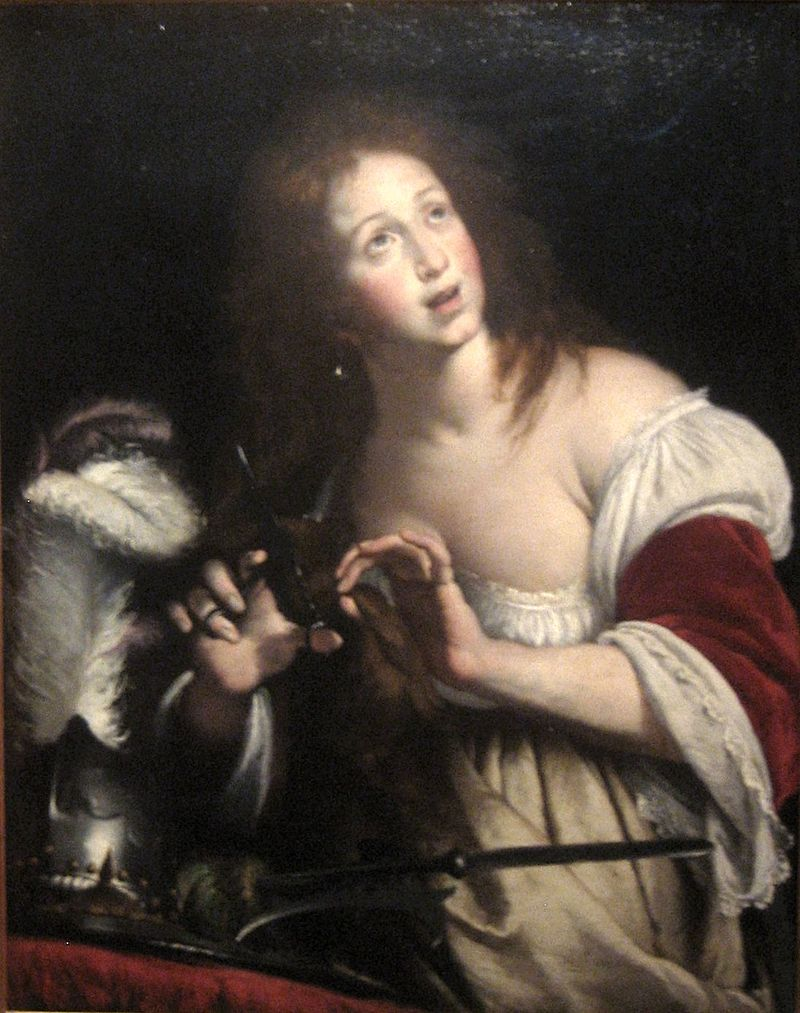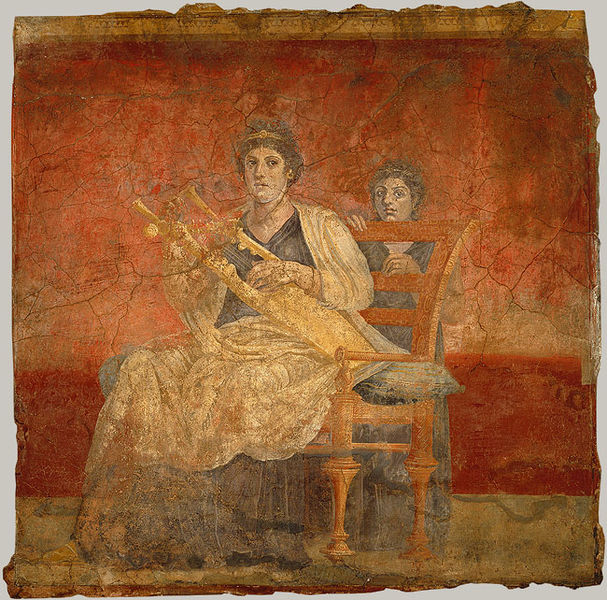Soon after the passing of Alexander the Great in 323 BC, one of his generals, Ptolemy (who went on to found the Ptolemaic Dynasty of Egypt and later known as Ptolemy I Soter), annexed Cyrene. As Cyrene proved challenging to govern, around two decades later Ptolemy I appointed the then 20-year-old Magas, son of his wife Berenice I from her previous marriage to an obscure local nobleman.
After Ptolemy I died, Magas proclaimed his independence and crowned himself King of Cyrene, making himself the first King of Cyrene in about two hundred years – the last of whom was Arcesilaus IV in 440 BC. Magas married Apama, a member of the Seleucid dynasty which had turned against the Ptolemies in 275 BC and waged war against his half-brother Ptolemy II Philadelphus, Ptolemy I’s son and successor. The only child born of Magas and Apama was named Berenice.

After several confrontations, Ptolemy II tried to make peace with his half-brother Magas of Cyrene in around 250 BC. Therefore, it was decided that Berenice would marry her half-cousin, the future Ptolemy III Euergetes, who would become Ptolemy II’s heir. Portrayed as youthful and unveiled, indicating her maidenhood, Berenice was already hailed as Basilissa (queen) on coins even in her father’s lifetime and, upon her marriage, she would be known as Berenice II Euergetis (“Berenice the Benefactress”).
King Magas died soon after this agreement, but Berenice’s mother, Apama, refused to uphold the Ptolemies’ marriage contract. Instead, she invited Demetrius the Fair, a prince of the Antigonids, to Cyrene to marry Berenice. Berenice was at the time already of legal age to marry and Demetrius required a legal union to support his reign. Since her father was already deceased and she had no male relatives, there were no impediments for Demetrius to marry her as soon as he arrived to Cyrene. In return, Demetrius then became King of Cyrene and vowed to protect Cyrene from the Ptolemaic dynasty. Thus, with the help of Apama who became his mother-in-law, Demetrius seized possession of Cyrene.
Allegedly, Demetrius and Apama soon became lovers. According to legends, Berenice killed Demetrius after seeing him in bed with her mother. Berenice spared her mother’s life, and upon her marriage to Ptolemy III in 246 BC, she transferred the governance of Cyrene to a government headed by two Cyrenaeans named Ecdelus and Demophanes, and incorporated Cyrene once more into the Ptolemaic empire due to her marriage to Ptolemy III. Cyrene would remain under the rule of the Ptolemaic dynasty until her great-great-grandson Ptolemy Apion bequeathed it to the Roman Republic in 96 BC.
Shaping the Legend of Berenice, the Queen of Egypt
Like all tales of war, murder and revenge, the more unsavory details would have taken on a life of their own and be wildly exaggerated as the story was told and retold. Therefore, controlling the narrative of the retelling of Demetrius’ murder would have been one of the earliest challenges that the newlyweds faced. Berenice’s role in the murder needed to appear acceptable to the public and posed no threat to her new husband or the wellbeing of his empire.
Controlling the narrative would have been important to Ptolemy III for the same reason. His ascent to the throne had only happened recently, and his marriage with Berenice had to be delayed due to the Demetrius affair. Furthermore, Demetrius’ ascent to the throne of Cyrene, his murder and the stabilization of relations between Egypt and Cyrene would have all called for creating a court myth that retells these events that appeals to the popular imagination. This was important to legitimize his rule, confirm his own identity and reaffirm the identity of the people he wished to rule by reaffirming the values upon which his rule was founded whether these values were of political, religious, or social nature.

The use of narratives and symbols bring the basic human mental and emotional activity patterns under conscious thought and expression. The Ptolemaic dynasty was well-aware of this and had worked for generations to establish their own royal cult through narratives and symbols. Ptolemy I introduced the figure of the Graeco-Egyptian deity Sarapis for this purpose. Then, his son Ptolemy II officially deified deceased Ptolemy I and Berenice I as gods of his kingdom and associated himself and his wife (and full-sister) Arsinoe II with their now divine parents. Ptolemy II also established an official ruler cult through his and Arsinoe’s association with the cult of Alexander the Great in which the priest of Alexander also became the priest of their own cult. And now, Ptolemy II’s son, Ptolemy III needed to introduce a new mythological basis for the new chapter brought about by his own marriage to Berenice, strengthening his dynastic continuity by connecting himself and his new wife with his predecessors while identifying certain unique quality which marked his reign.
In his Epitome of Philippic History of Pompeius Trogus, 26.3.7-8, the historian Marcus Justinus Frontinus (Justin) portrayed Berenice in a softer light. He stresses Demetrius’s arrogance, which provoked the people’s hatred, and Berenice’s filial piety. In his account, Apama hears Berenice’s voice as she stands at the door giving the soldiers orders to spare her mother. Despite her mother’s best efforts to hide her lover with her body, she finally fails to save him. Thus, in one stroke, Berenice showed her filial piety to both her parents by punishing her mother’s scandalous conduct, though sparing her life, while showing her obedience to her father by complying with her father’s judgment in her choice of a husband.

Berenice’s Lock: A Poem for a Queen, A Myth for an Empire
Shortly after the marriage of Ptolemy III Euergetes to Berenice II of Cyrene in 246 BC, the King received word of imminent danger to his sister, also named Berenice, who had been married to the late Antiochus II. In return for his safety as his marched to Syria to save his sister’s life, his loving wife promised to sacrifice a lock of her hair in return for his safety. Upon Ptolemy’s return from the campaign, a lock of hair from the Queen’s head was cut and dedicated to the gods, only to disappear by the following day. Later, the court astronomer Conon then announced that he had discovered the lock in the night sky, appearing as a new constellation between Virgo and Leo. In the poem Berenice’s Lock, Callimachus provided further details of the event, that Zephyrus carried off the lock at the command of Aphrodite who then placed it among the stars. It was this poem that became the mythological basis for the new phase of Ptolemy and Berenice’s marriage. To this day, the constellation is called Coma Berenices (“Berenice’s Lock”).

It was very likely that this event was completed with the knowledge and consent of the court. Although the dedication functioned as a celebration of Ptolemy’s successful Syrian campaign, the nature of the act focused attention on the queen’s life in her new role as bride and Queen. Of course, we cannot know if it was Berenice herself, rather than her husband or his advisors, who engineered the dedication of the lock. But the narrative falls very much within the pattern of earlier cult practices in which the Ptolemaic queens were portrayed in a romantic light and openly celebrated to legitimize their joint rule with their husbands. A lock of hair that Berenice II donated was placed in the Aphrodite-Arsinoe temple at Zep. The choice of this site was also very likely deliberate, as in choosing this site laid the groundwork for her identification with Aphrodite, a practice already established for the previous Ptolemaic Queen Arsinoe II, as well as for the earlier Queen Berenice I, the wife of Ptolemy I Soter. Aphrodite was the deity most prominently connected with the Ptolemaic queens as Aphrodite was worshipped as a goddess of marriage. Thus Aphrodite also featured in the poem to place Berenice’s lock among the stars.
The Ptolemaic court spread the legend far and wide, and Berenice became a symbol of marital devotion. Although only a few lines of Callimachus’ version of the story remained, the Latin poet Gaius Valerius Catullus retold the story by translating Callimachus’ work. However, as Ptolemy could have predicted, the retelling of the story grew to be more elaborate. Catullus’ version fo Berenice is a love-sick newly-wed who weeps, moans and faints as the king goes off to lay waste to Syria. According to Catullus’ poem 66, the head of hair from which Berenice’s lock of hair was cut was deliberately characterized as flavus (“blond”, or golden-yellow). He also made the association between Berenice’s hair with the fabled princess Ariadne’s garland which was also made into a constellation in the sky.
By Cutting Her Hair, the Princess Matured into a Queen
Normal hair cutting signifies the passage from infancy to maturity. The Iliad’s story of Achilles cutting his hair over Patroclus’ funeral pyre and his father’s promise that his son would donate his hair to the river Spercheius on returning to his native land serves as the main inspiration for Berenice’s lock’s dedication.
In that both entail payment for the answer to a prayer, Berenice’s sacrifice and the one Peleus promised have a lot in common. However, Peleus’ pledge fits with the custom of young Greek boys getting their hair chopped for the first time to signify their transition into manhood. There’s a good chance that readers in the third century BC liked this view. Young men occasionally give locks of hair to Apollo along with the first shave of their beards.

The custom has been reported in numerous regions of Greece in cult and myth. According to Plutarch, Theseus had his hair cut at Delphi according to the tradition when young men would give Apollo their first haircut. In Delos, both youth men and ladies (the women who were about to get married) donated hairpieces for the Artemisium. The tomb of the Hyperborean girls who passed away there was decorated with their donations. Similar to this, Megara’s young brides offered a hair sacrifice to Iphinoe, the fabled King Alcathous’ daughter who died unmarried. Another well-known instance of this kind of sacrifice occurred in Troezen, when young women who were being married had their hair chopped short for Hippolytus. According to Euripides, Artemis founded the institution to keep Hippolytus’ memory alive. Hippolytus’ main heroic quality was his unwillingness to give up his purity for the rituals of Aphrodite. These examples make it very evident that hair sacrifices were frequently made by both girls and boys as they approached marriage and manhood, respectively.

